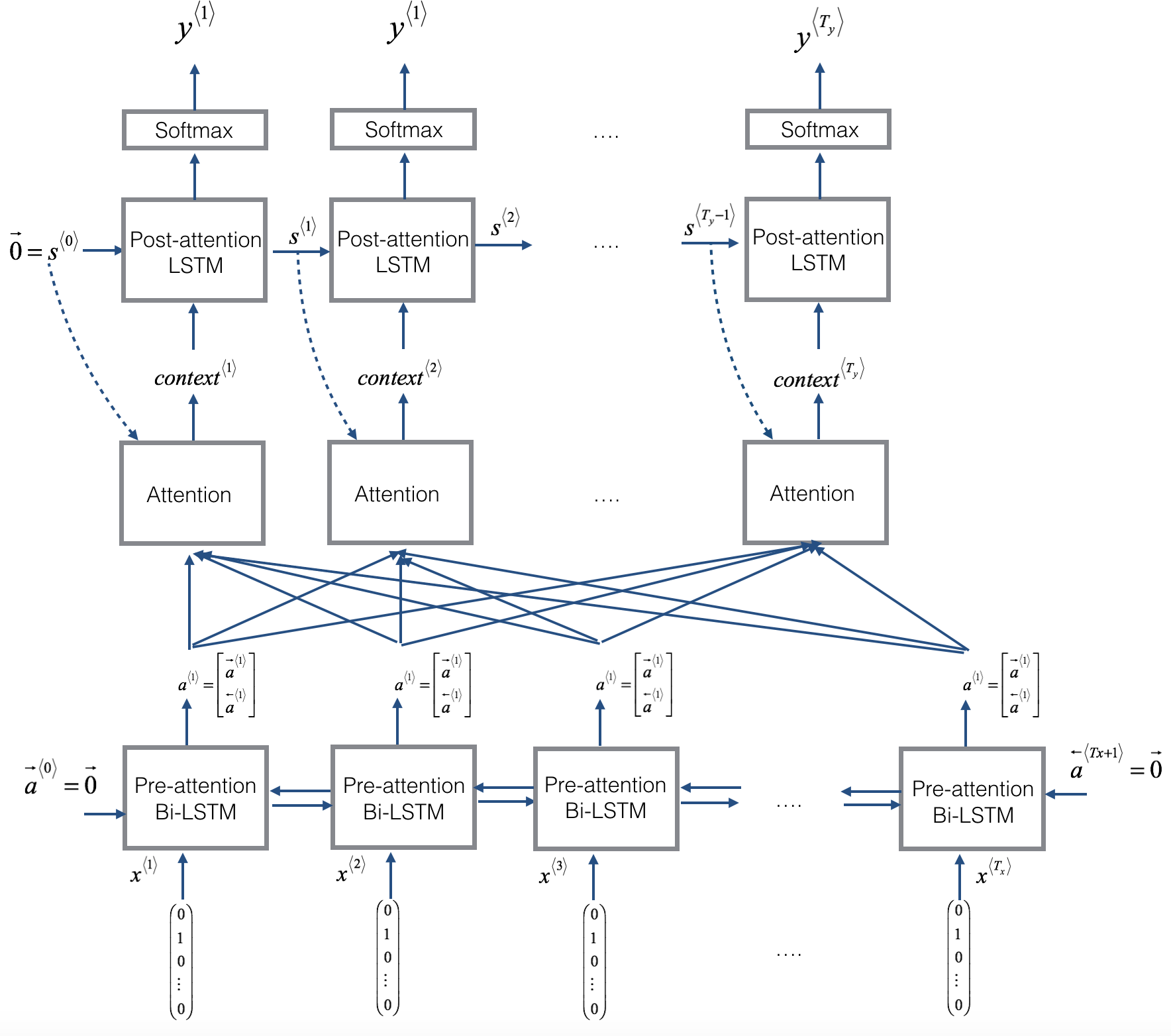The Neural Machine Translation (NMT) model translates human-readable dates ("25th of Feb, 1999") into machine-readable dates ("1999-02-25")
The code is in Python 3.
model.py has 2 main functions : one_step_attention() and model().
-
one_step_attention() computes :
- [α<t,1>,α<t,2>,...,α<t,Tx>]the attention weights
- context^⟨t⟩: the context vector
- [α<t,1>,α<t,2>,...,α<t,Tx>]the attention weights
-
model() function
- Model first runs the input through a Bi-LSTM to get [a<1>,a<2>,...,a][a<1>,a<2>,...,a].
- Then, model calls one_step_attention() Ty times using a for loop. At each iteration of this loop:
- It gives the computed context vector contextcontext to the post-attention LSTM.
- It runs the output of the post-attention LSTM through a dense layer with softmax activation.
- The softmax generates a prediction ŷ
model.py has the main code and just run it on the command line.
In model.py I have added some examples as a test set. You can modify that to test your own examples.
- Sample Output
-
After training for 20 epochs.
source: 3 May 1979 output: 1979-05-03 source: 5 April 09 output: 2009-04-05 source: 21th of August 2016 output: 2016-08-01 source: Tue 10 Jul 2007 output: 2007-07-10 source: Saturday May 9 2018 output: 2018-05-09 source: March 3 2001 output: 2001-03-03 source: March 3rd 2001 output: 2001-03-01 source: 1 March 2001 output: 2001-03-01
-
The code might take a couple of minutes to run as it trains 20 epochs.
